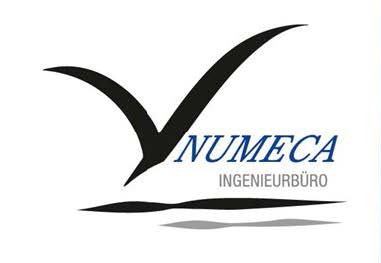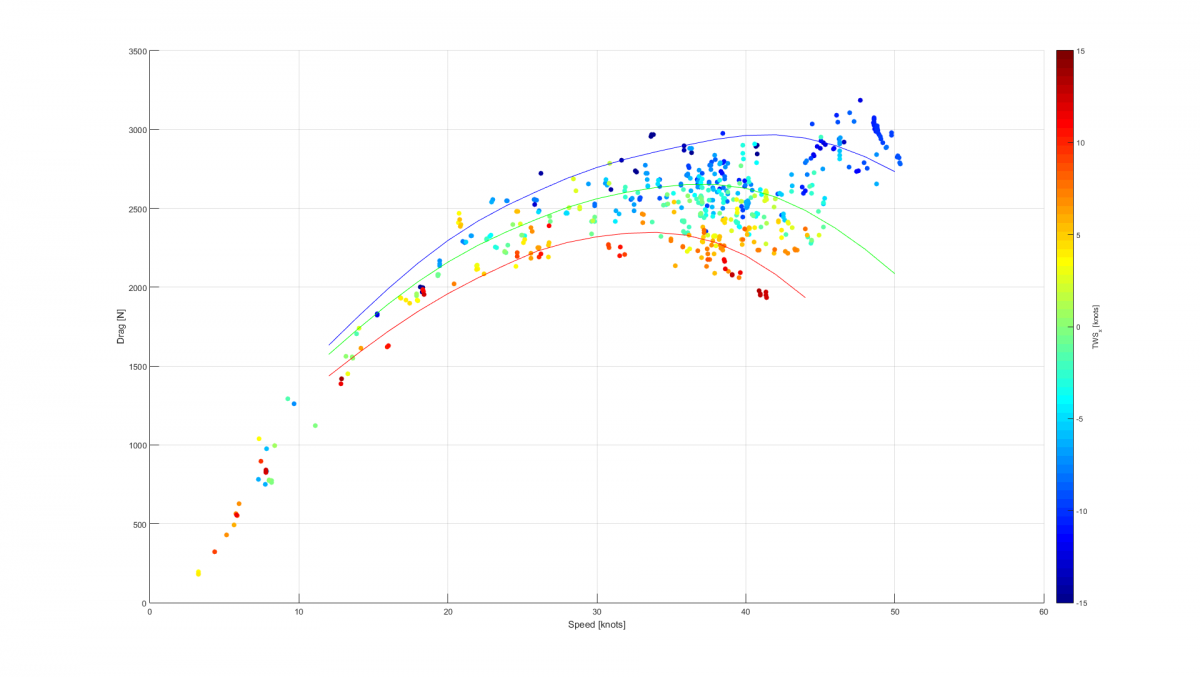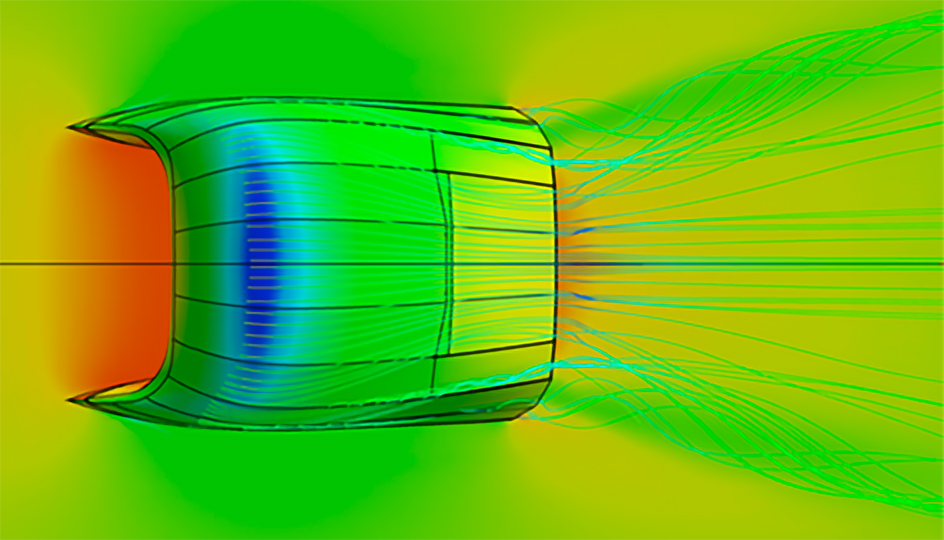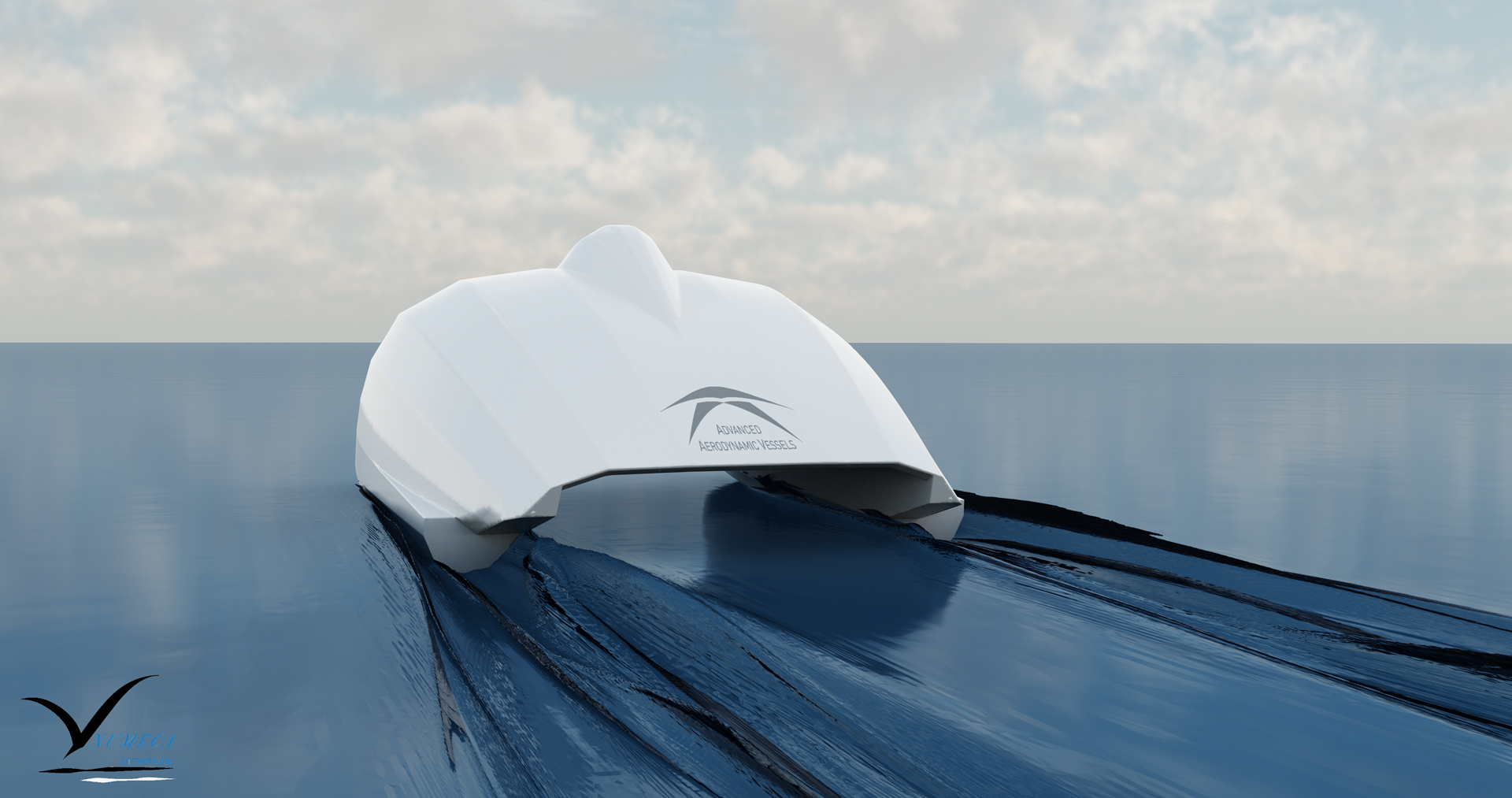Ultra-Fast and Fuel Efficient Aerodynamic Boat Design by A2V with FINE™/Marine
Marine | Hydro
Advanced Aerodynamic Vessels (A2V) develops and commercializes a new generation of fast transportation vessels, using aerodynamics to improve energy efficiency. Its revolutionary shape transfers the weight of the ship from the water to the air. As the required propulsive power depends mostly on the weight carried through water, reducing this weight significantly reduces fuel consumption.
“A2V technology has changed the rules by developing and commercializing a new generation of fast and fuel efficient passenger transport vessels. They have designed and patented a wing-like catamaran geometry, which at speed provides aerodynamic lift above the water, alleviating the vessel and thus reducing its power requirements.”
Conventional Fast Vessels
Today’s conventional fast vessels’ speed depends purely on power. As a consequence increasing speed inevitably comes at the cost of much higher fuel consumption. From an economic and environmental point of view, this leads to an unsustainable cost per passenger.
Meanwhile in a conventional monohull or multihull, fuel consumption per passenger is directly linked to the size of the vessel: the bigger the vessel, the lower the fuel consumption is per passenger when the boat is fully loaded.
Thanks to the Aerodynamic Lift, Faster Means Lighter and More Efficient
A2V technology has changed the rules by developing and commercializing a new generation of fast and fuel efficient passenger transport vessels. The company markets workboats for the offshore industry, the commercial passenger maritime transport industry, and the states for their patrol, surveillance and rescue missions. How? They have designed and patented a wing-like catamaran geometry, which at speed provides aerodynamic lift above the water, alleviating the vessel and thus reducing its power requirements. Thanks to the aerodynamic support, above a critical speed, the faster A2V vessels go, the less fuel they use.
“The A2V vessel has a fuel consumption of about 9 litres per passenger per 100km at 50 knots, independent on vessel size, from 10 to 100 passengers, from 12 to 30 meters. As a comparison, present state-of-the-art crewboats typically burn more than 30 litres per passenger per 100km and travel below 40 knots”. (source: http://www.aavessels.com/concept/).
Numerical Challenges
One of the challenges in the design of such a vessel is the modelization of the free surface deformation at high speed, to which the stepped hulls are very sensitive since the aft part of the hull is operating in the wake of the forebody. The aerodynamic with the ground effect, both in steady and unsteady conditions, has also been a challenge. In order to model the behavior in the waves with reasonable computational times, A2V carried out systematic aerodynamic analyses and used the results to build a mathematical model. This aerodynamic model was implemented in the hydrodynamic computations using FINE™/Marine dynamic libraries.
“CFD is the core of the design approach of this vessel. With NUMECA’s software FINE™/Marine, A2V relied entirely on simulation during the design of the fully instrumented 10.5m prototype.”
Accurate Predictions
Computational Fluids Dynamics is the core of the design approach of this vessel. With NUMECA’s software FINE™/Marine, A2V relied entirely on simulation during the design of the fully instrumented 10.5m prototype. The full scale measurements showed that numerical predictions were accurate, as shown in the Figure 1 where numerical predictions are continuous lines and measurements are dots. The total drag is plotted versus speed for three different cases : (1) 10 knots head wind in red, (2) no wind in green and (3) 10 knots tail wind in blue.FINE™/Marine also allowed detailed analysis of the flow to refine the design.
Author
Lionel Huetz, CEO,
Advanced Aerodynamic Vessels, France





